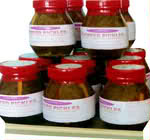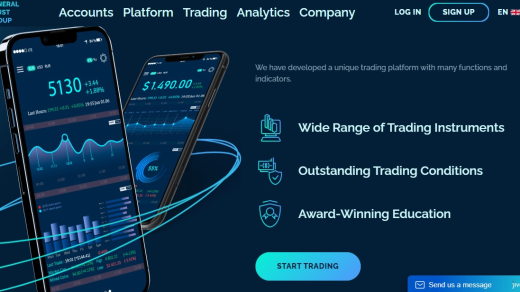 “A business no matter how small is big enough for a sustenance seaweed farmer and his family.” This is what Ms. Enone V. Tepait of the Don Mariano Marcos Memorial State University (DMMMSU) believes as she comes up with a technology on seaweed pickles.
“A business no matter how small is big enough for a sustenance seaweed farmer and his family.” This is what Ms. Enone V. Tepait of the Don Mariano Marcos Memorial State University (DMMMSU) believes as she comes up with a technology on seaweed pickles.
In the Philippine aquaculture setting, seaweeds and milkfish are considered the top commercially important species. Considered valuable, 800 species of seaweeds have been noted. The major commercial seaweeds in the Philippines are Eucheuma, Kappaphycus, Gracilaria spp., and Caulerpa lentillifera. Others include Codium, Gelidiela acerosa, Halymenia, Porphyra, and Sargassum spp.
Production of seaweeds has continuously increased from 707,039 MT in 2000 to 1,204,808 MT in 2004. In 2008, good planting materials of seaweeds and better farm management, together with the newly opened areas in Palawan, resulted in a remarkable increase in output. In Zamboanga Sibugay and Tawi-tawi, there was seedling dispersal by Bureau of Fisheries and Aquatic Resources (BFAR). More seaweed areas were utilized where farmers were encouraged to culture owing to better demand.
Aside from seaweed culture being practiced by local fisherfolk, DMMMSU in Paraoir, Balaoan, La Union, developed a promising technology on producing pickles out of seaweed. Pickles are a potential livelihood project for the housewives of seaweed fishermen as an additional source of income.
Preparing pickles from seaweeds
The study was prepared to determine the standard recipes in processing seaweed pickles, its acceptability, food nutrients available, and the shelf life of processed seaweed pickles.
Easy and manageable. These best describe the seaweed pickles technology as the ingredients to be used are readily available in the local market. From the locally-known seaweeds, pickles can be made from Kappaphycus or Eucheuma and pickling ingredients such as sugar, vinegar, salt, crushed pineapple, carrots, onions, ginger, bell pepper, and chili.
The easy-to-do steps also coincide as a good source of food nutrients such as total fat, moisture, ash, carbohydrates, sodium, calcium, iron, sugars, dietary fiber, and vitamin. The shelf life of the product depends on the kinds of container used for packaging. For instance, glass bottles can prolong the product for five to six months while a Nylon stand-up pouch can be sustained for five months (30 oC) or nine months (20 oC).
Package development was designed by DMMMSU and the Package Development Center (PDC) of the Department of Science and Technology-Industry and Technology Development Institute (DOST-ITDI). This includes the label for the product. Bar Code is already obtained as a main requirement in marketing the products.
Gains from seaweed pickles
Ms. Tepait, project leader, led an R&D team in various technology transfer and commercialization activities to further promote and disseminate the technology. A technology dissemination and information campaign was launched through print media, radio broadcasting, seminar/training workshop, trade fairs, exhibits, and provision of technical assistance. “These encouraged fisherfolk to adopt the technology to be one of their livelihood projects, thereby as a source of additional income, especially those farmers engaged in seaweed farming. Family members can help in the project since the process is easy and manageable,” she said.
The technology does not involve machineries and is a potential livelihood for coastal areas. A family can just have a starting capital of P260 to P276. A one-shot process of a kilogram of seaweeds will give a return of investment (ROI) of 26.81 – 34.62 percent. Farmers producing the seaweed raw material will have additional products to invest on, and a guaranteed additional income.
However, Ms. Tepait suggested close collaboration of the concerned agencies, especially in the commercialization aspect must be in place. She explained that, 99-100 percent assured results of the study is to be attained only through continuing research in the project area as the project goes on.
The technology on seaweed pickles benefits not only the housewives of seaweed farmers but also the fishermen themselves. Possible entrepreneurs and stakeholders would also look into venturing into a business for a possible enterprise benefiting not only the seaweed industry but also the whole fisheries sector.
Indeed, “A business, no matter how small it is, is big enough for a sustenance seaweed farmer and his family”.
———-
Sources:
http://bas.gov.ph/perfperiod.php?id=3, Agricultural Performance. Bureau of Agricultural Statistics, retrieved 16 October 2008.
http://library.enaca.org/NACA-Publications/MaricultureWorkshop/MaricultureWS2006_Philippines.pdf Country report on Marine Farming in the Philippines by Westley R. Rosario, retrieved 16 October 2008.
Story by Ma. Eloisa E. Hernandez, “Small Business on Seaweed Pickle Turns Big” Bar Digest, July-September 2008, Volume 10 Issue No. 3
Photos by DMMMSU




Recent Comments